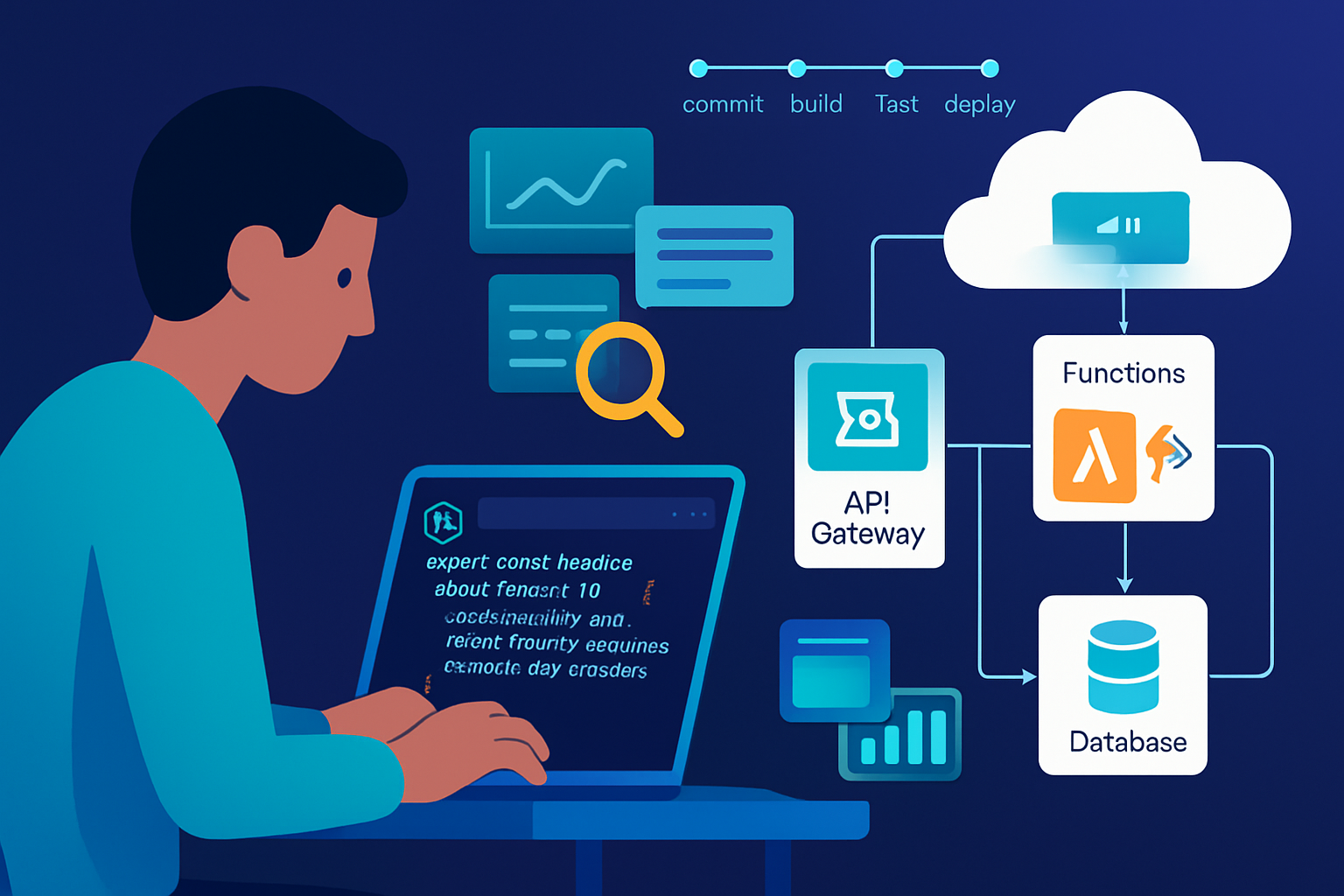· career · 5 min read
Coding Your Own Destiny: Benefits of Freelancing in a Post-Pandemic World
The pandemic accelerated remote work and reshaped hiring - and for JavaScript developers that means unprecedented freelance opportunity. This article explains why demand for freelance JS talent has grown, how the market has shifted post-pandemic, and practical steps to build a sustainable freelance practice you control.

Outcome-first: by the end of this article you’ll understand why the freelance market for JavaScript developers is stronger than ever, where the opportunities live, and the concrete first steps to win and keep remote clients.
Why now? The post-pandemic tailwind for freelance developers
The pandemic did more than change where we work. It rewired hiring, product roadmaps, and the tech stacks companies bet on. Remote-first hiring became normalized. Companies that once insisted on office presence built processes, tools and trust to work asynchronously. The consequence: more openings that don’t require a physical commute - and that opens the door wide for freelancers.
- Remote work adoption accelerated dramatically during the pandemic and many organizations continue hybrid or fully remote hiring strategies (see McKinsey’s analysis of remote work trends).
- Freelance marketplaces and remote job boards scaled with demand; businesses learned to hire short-term specialists for features, migrations, and modernization projects rather than expanding full-time payrolls (Upwork’s Future Workforce research).
Short version: if you can deliver results from anywhere, there are more clients than before.
Why JavaScript freelancers are especially in demand
JavaScript is the lingua franca of the web. It powers front-ends, backend services via Node.js, serverless functions, and many modern tooling pipelines. The language and its ecosystem are everywhere - and companies need people who can ship web experiences fast.
- JavaScript remains one of the most commonly used languages in developer surveys (see the Stack Overflow Developer Survey).
- Modern front-end frameworks (React, Vue, Svelte) and the rise of Jamstack architectures and serverless backends mean companies frequently hire specialists for short- to mid-term projects (Jamstack, serverless platforms like AWS Lambda and Vercel).
In short: demand + portability = opportunity. You can be a front-end specialist, a full-stack freelancer using Node/Express or serverless functions, or a Jamstack expert building blazing-fast static-first sites.
Benefits of freelancing now (concrete and practical)
Autonomy and control
- Choose clients, projects, and schedule. You’re no longer waiting for internal roadmap shifts.
Pay upside and rate flexibility
- Firms pay a premium for short-term specialization and fast delivery. You can raise rates quickly as you build a track record.
Diverse portfolio and faster skills growth
- Exposure to many codebases, industries and stacks accelerates learning more than a single full-time role often can.
Work-life fit and geography-independent income
- Remote work lets you work from anywhere - and lets clients tap global talent. You can live where you want and still command rates aligned with your value.
Demand for JS-specific roles
- From single-page apps and PWAs to serverless APIs and e-commerce front-ends, JavaScript skills map cleanly to high-value freelance work.
What businesses are hiring freelancers for (common project types)
- New product MVPs and prototypes
- Feature sprints and UI rewrites (React/Vue/Svelte)
- Jamstack website builds and migrations
- Performance and accessibility remediation
- Integrations (third-party APIs, payment, shipping)
- Serverless function and microservice development
- Short-term contract engineering leadership
If you can solve a measurable business problem in a 2–12 week engagement, you’re in great shape.
How to position yourself: Practical steps for JavaScript freelancers
Nail a clear positioning statement
- Example: “I build accessible React/Next.js e-commerce frontends that lift conversion rates for small DTC brands.” One sentence. Client-focused. Outcome-driven.
Build an outcome-focused portfolio
- Showcase case studies: problem, approach, outcome (metrics if possible). Screenshots and links help. If you don’t have client work, ship personal projects or contribute to open-source.
Choose channels to find work
Create a proposal template
- Problem summary, deliverables, timeline, price, assumptions, next steps. Keep it short and scannable.
Start with a simple contract
- Outline scope, payment milestones, IP ownership, confidentiality, and cancelation terms. Consider using established templates from lawyer-backed freelancing resources.
Price confidently
- Charge by value where possible (e.g., project fees or retainers). If hourly, set a floor and negotiate upward. Track your actual time for better future estimates.
Managing remote client engagements (process and tools)
- Communication: set expectations on channels and response windows. Asynchronous-first works best across time zones.
- Onboarding checklist: access to repos, design files (Figma), staging URLs, API keys, and a single product contact.
- Tools that speed you up: GitHub/GitLab, Vercel/Netlify, Docker (where needed), CI/CD, Jest/Playwright for tests, Figma for design handoffs, Slack/Discord/Email for communication.
- Deploy and demo often: incremental releases build trust and reduce surprises.
Useful platforms: GitHub, Vercel, Netlify, Figma, Slack, Trello/Linear/Jira.
Pricing, retainers and long-term relationships
- Avoid one-off firefighting gigs when possible. Propose a short fixed-scope engagement followed by a maintenance retainer.
- Retainers provide predictable cash flow and keep you connected to the product roadmap.
- Offer maintenance, monitoring and performance optimization as recurring services.
De-risking freelancing (common fears and mitigations)
- Feast/famine: build a pipeline and maintain a savings buffer. Aim for at least 3 months of runway when you go full-time freelance.
- Clients ghosting: require deposits and milestone payments. Use written agreements and clear deliverables.
- Scope creep: define out-of-scope items and hourly rates for additional work.
- Legal and taxes: consult an accountant or lawyer for contracts, invoicing, and jurisdictional tax issues. Consider forming an LLC or equivalent.
Scaling beyond solo freelancing
- Productize: package a repeatable service (e.g., “Next.js SEO performance tune-up”) and sell it as a fixed product.
- Hire subcontractors: take on larger projects by coordinating small teams.
- Build a small agency or SaaS: transition from time-for-money to product-led income when you spot repetitive client pain.
Final checklist to get started this week
- Write a one-sentence positioning statement.
- Publish a single focused case study or project demo.
- Join one freelance marketplace and apply to 3 relevant jobs.
- Create a simple proposal template and a basic contract.
- Set professional hourly/project rates and test them.
Resources and further reading
- Stack Overflow Developer Survey - for language and ecosystem trends: https://insights.stackoverflow.com/survey
- Upwork - research and reports on the freelance workforce: https://www.upwork.com/press/
- Jamstack community - trends and resources for static-first architectures: https://jamstack.org/
- MDN Web Docs - JavaScript reference and best practices: https://developer.mozilla.org/en-US/docs/Web/JavaScript
Conclusion - code your own destiny
Companies now expect distributed teams and short-term specialist engagements. JavaScript is at the center of the modern web, and that visibility translates to freelance opportunities you can choose. Start lean. Focus on outcomes. Ship value quickly. Build reputation deliberately. Do this and you won’t just find work - you’ll design a career that fits the life you want.



